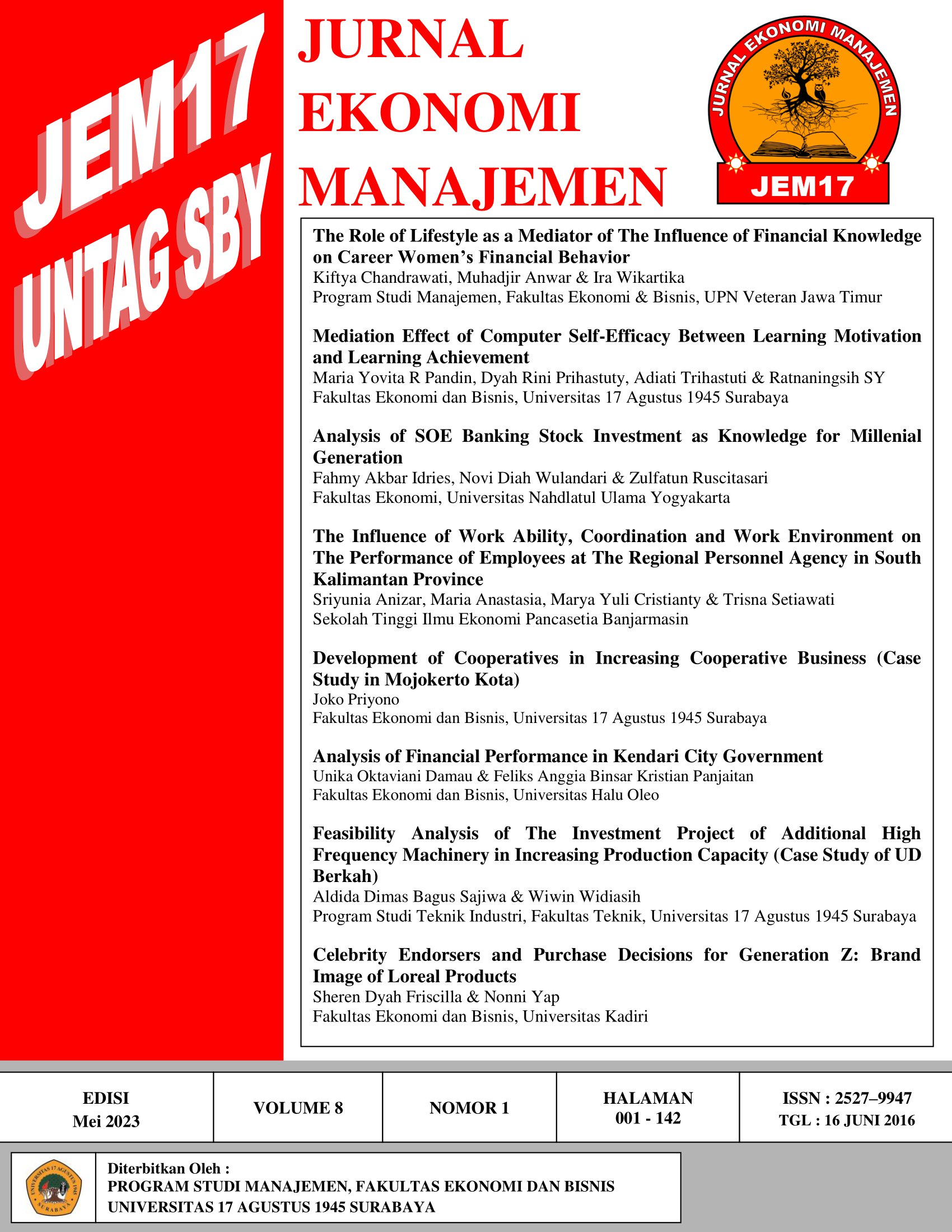Feasibility Analysis of The Investment Project of Additional High Frequency Machinery in Increasing Production Capacity
(Case Study of UD Berkah)
DOI:
https://doi.org/10.30996/jem17.v8i1.8664Abstract
UD Berkah is a small business, that currently produces surface mats for adult slippers and children's slippers. Hot Embossing is one of a series of processes for making the surface of slippers. The Hot Embossing process requires a High Frequency machine to create a pattern on the printed slipper surface. Currently UD Berkah has 3 units of High Frequency machines to meet consumer demand. Due to the large number of requests, not all of them can be done by the company itself, so it requires the services of subcontractors to meet production shortages. Currently, the company plans to purchase High Frequency machines to overcome this problem. So it is necessary to analyze the feasibility of investment projects by considering several aspects with the Straight Line Depreciation method approach, Payback period, Net Present Value, Profitability Index and Internal Rate of Return. This is done to consider whether the investment in adding High Frequency machines is feasible or not for UD Berkah. Research results with an investment value of Rp. 55,000,000 with an economic life of 5 years, the results for a depreciation of Rp. 7,000,000 every year, NPV of Rp. 477,026,441, payback period results for 1 year and 8 months, Profitability Index value is 11.7, the IRR value shows the result of 37.54%, So it can be concluded that investing in high frequency machines is feasible.
Keywords: Hot Embossing, High Frequency, Investment, Net Present Value, Internal Rate of Return.
Downloads
Downloads
Published
Issue
Section
License
Authors whose manuscript is published will approve the following provisions:
- The right to publication of all journal material published on the JEM17: Jurnal Ekonomi Manajemen website is held by the editorial board with the author's knowledge (moral rights remain the property of the author).
- The formal legal provisions for access to digital articles of this electronic journal are subject to the terms of the Creative Commons Attribution-ShareAlike (CC BY-SA) license, which means JEM17: Jurnal Ekonomi Manajemen reserves the right to store, modify the format, administer in the database, maintain and publish articles without requesting permission from the Author as long as it keeps the Author's name as the owner of Copyright.
- Printed and electronically published manuscripts are open access for educational, research, and library purposes. In addition to these objectives, the editorial board shall not be liable for violations of copyright law.

















